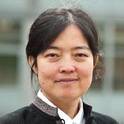Article
Introduction—Living in Chinese Enclave Cities
Urban Geography
(2012)
Abstract
It is by now well documented that China’s remarkable economic and social development has been accomopanied by an equally astonishing spatial transformation. The concentrated Maoist city with its cellular work-unit structure of mixed functions amidst open rural land has almost disappeared. In its place, huge and ever-expanding urban fields of patchworked, unifunctional, and monocultural enclaves have emerged, often separated by walls and gates. The resulting urban spatial structure can be described as enclave urbanism. We use this term to refer to an urban structure of distinct areas marked by specific cultural, functional, and economic groups or activities. In our reading, “enclaves” merit a neutral interpretation. A diversity of activities—work, leisure, shopping, and housing— can result in the formation of enclaves; and enclaves can be both exclusive and low-end. Thus gated commodity housing estates, urban villages, erstwhile work-units, shopping malls, and development zones are all enclaves. Often they are physically separated from their surroundings and access can be selectively restricted.
The articles in this special issue treat various aspects of Living in Chinese Enclave Cities.
Disciplines
Publication Date
2012
DOI
10.2747/0272-3638.33.2.161
Publisher Statement
At the time of publication Yiping Fang was affiliated with Erasmus University
Citation Information
Bart Wissink , Ronald van Kempen , Yiping Fang & Si-ming Li (2012). Introduction—Living in Chinese Enclave Cities, Urban Geography, 33:2, 161-166.
